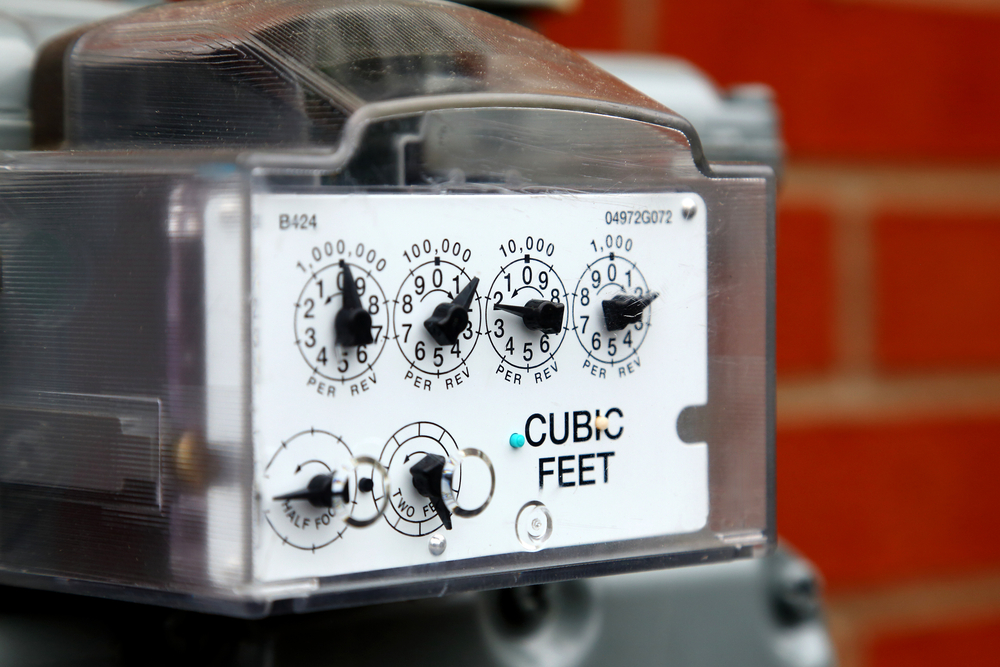What’s the Cost of the Average Gas Bill?
The price of monthly utilities can vary by region and by household usage. Areas with extreme temperatures during winter and summer may see utility needs surge during these periods because of more frequent HVAC usage. However, some areas of the country offer lower costs of living and the price for utilities may be lower, too.
Natural gas may be used to heat the home, power major appliances (stoves/ovens and laundry) and warm up the water supply. What’s the cost of the average gas bill? Move.org reports that, on average, most households pay about $70 a month for gas. Again, though, this number may be higher or lower depending on consumption and regional prices.
How Much Should a Gas Bill Be a Month?
Since utility usage may fluctuate during the year, homeowners may struggle to predict the price of their monthly bills. The price of natural gas may rise because of the size of the home (more square footage requires more energy for heating), regional prices, and how much gas is being used daily.
The bottom line of that bill may increase because a home’s dominant energy source is gas. If all major appliances and the HVAC are fueled by natural gas, the bill will reflect this dependency. Some states have much higher prices for gas than others; according to Choose Energy, Alabama reports a very high rate for natural gas (more than $14 per thousand cubic feet), whereas New Mexico’s rate is only around $5.60.
Homeowners may be able to get a better understanding of their usage by comparing their monthly bills and then assessing the yearly consumption. Some utility providers may offer a ‘budget billing’ option to allow homeowners to pay one single rate for 11 months of the year with the final month representing an over/under figure. To figure this monthly rate, the utility provider figures the average rate for the year based on the household history. However, if the home’s energy usage is higher or lower than estimated, the last bill of the year may reflect the miscalculation.
Interested in budget billing? Contact your natural gas provider to inquire if this is an option.

How Much is a Typical Natural Gas Bill?
What’s typical for one homeowner’s gas bill might seem astronomically high for another. A really high gas bill could be related to a much higher consumption or maybe there was a rate increase. What else could be the culprit for that higher bill?
Look at all the appliances that use natural gas in the home and assess the monthly use. Drying more clothes? That could increase the bill. Using more hot water could be a culprit, too. Even cooking more meals at home may bump consumption. A common cause for higher gas bills is using more heat during the winter; homeowners could try nudging down the thermostat to help lower consumption.
How Can Homeowners Lower the Gas Bill?
If that monthly gas bill is causing financial stress, consider ways to lower consumption…or call the utility provider to inquire about budget options. How can homeowners lower gas consumption? Little changes could make a nice dent in the bill:
- Adjust the thermostat (opt for 68 degrees in the winter and 78 degrees in the summer)
- Take shorter showers
- Lower the temperature on the hot water heater (120 degrees Fahrenheit is recommended)
- Insulate hot water pipes (be sure to follow the installation guidelines)
Gas vs. Electricity: Which is Better?
Homeowners who are thinking about moving to a new home or building a new home might also consider energy sources used to power their homes. Some prefer one energy option over the other; some cooks love gas-powered stoves over electric. However, rates also could impact this preference, too.
Check out the rates for electricity and natural gas. These rates may impact the energy option you prefer for your home.
Conduct a Home Energy Audit to Check for Energy Drains
Whether the home is powered primarily with natural gas or electricity, all homeowners can find ways to save by conducting a home energy audit. Tour the home room by room and check outlets for unused devices and appliances that may be zapping energy; examine pipes for leaks, too. Conducting a home energy audit also may be the perfect time to adjust thermostat temperatures for the hot water heater or the HVAC.
Homeowners can simplify the auditing process by using Benefyd. Just take a picture of each room and the app will find energy drains for each room. Benefyd will provide advice on how to lower energy costs, and homeowners also can find energy rebates to save even more money.
While the regional rate greatly impacts the monthly gas bill, homeowners can take steps to lower energy consumption. Adjust the thermostats, take shorter showers and insulate water pipes to keep precious heat from escaping. Local utility companies also could offer budget billing options to ensure that homeowners know what to expect from that bill each month. To find other hidden energy drains, conduct a home energy audit and cut costs from other utility bills, too.


